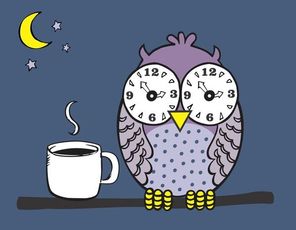 The following chart shows the results of the American 2005 Sleep Poll that relate to symptoms of insomnia. More than half of those polled reported experiencing symptoms of insomnia (indicated by the Dragging Duos, Overworked, Overweight, and Overcaffeinated, and the Sleepless and Missin' the Kissin' groups). Insomnia can involve difficulty in falling asleep, waking up frequently at night, waking up too early in the morning, or waking up and not feeling refreshed. Insomnia is not a disease but a symptom. It can be caused by an underlying sleep disorder, or might be brought on by something as simple as a change in schedule, a stressful event at work, or an afternoon cup of coffee. Insomnia becomes more common as people grow older, and is also more common in women. Sleep: Why Do We Need it? Sleep plays an important role in our overall well-being. Many body functions suffer if we don't have regular sleep: Growth of new tissue and healing Control of body temperature Control of how energy is used (the body's metabolism) Immune system performance (defending the body against illness) Brain function and memory performance. People who don't sleep well are also more apt to have accidents, abuse substances such as alcohol, and even suffer greater illness and disease. Normal Sleep Cycle In falling asleep and sleeping, people go through predictable stages - Light sleep (approximately 50%) Deep sleep, called "slow wave" sleep, associated with feeling refreshed and restored (25%) REM (Rapid Eye Movement Sleep or Dream Sleep), during which dreams occur, rapid eye movements, and changes in breathing and muscle tone (25%) The Effects of Aging on Sleep With normal aging, people spend more time in light sleep, less time in deep sleep and have less REM sleep. With age, sleep becomes less "efficient." People take longer to fall asleep, wake up more frequently and spend more time awake. Older people also: Wake up more often throughout the night Have less total sleep time Spend more time in bed If You Are Having Trouble Sleeping Are you dissatisfied with your sleep? Do you routinely become sleepy during the day? Does your bed partner notice any unusual behavior while you sleep? Answering "yes" to any of these questions may mean that you have a sleep disorder. Before considering non-prescription or prescription sleep medications, try the following: Figure out the Cause and Try to Reduce its Effect Practice Good "Sleep Hygiene" Figure out the Cause and Try to Reduce its Effect Are Medications and Drugs Causing Your Insomnia? Are There Patterns Associated With Your Insomnia? Are You Depressed? Are Medications and Drugs Causing Your Insomnia? Certain medications can interfere with normal sleep patterns. Following is a list of drugs that can cause insomnia: Are There Patterns Associated With Your Insomnia? If you consult with your health care provider about your insomnia, he/she may ask you to keep a sleep diary. Your diary could look something like this: My Sleep Diary: Are You Depressed? Depression can take a toll on your ability to sleep. The self-administered Patient Health Questionnaire 9 is a test for diagnosing depression that you can take yourself. If you are concerned about depression, ask you health care provider about taking this test. Practice Good "Sleep Hygiene" Good sleep hygiene describes methods you can use to encourage drifting off into quality sleep. Some examples follow: Wind down prior to bedtime Do not smoke (nicotine is a stimulant) or consume caffeine Try warm milk or a light snack before bed (if this doesn't interfere with another treatment you are using) Exercise daily, but not right before bedtime Take a warm bath, but not right before bedtime Keep a regular bedtime and rising time Get in the habit of going to bed when you are sleepy and sleeping where you sleep best Reserve your bed for sleeping only Don't have any clocks visible to you Reduce the amount of time you allow yourself to sleep until you fall asleep easily (your health care provider can help with this form of "sleep restriction therapy" Schedule worry time during the day and put worries out of your head when it is time to sleep; you can write them down on 3x5 cards, and then let go of them Get up if you have not fallen asleep in 15 minutes and practice a relaxing activity (e.g. handwork, reading a boring book) until you feel sleepy Over-the-Counter Sleep Aids Non-prescription medications for insomnia are usually antihistamines and may have significant side effects including: "Carry over sedation" (fatigue and tiredness the day after taking them). Falls Difficulty with urination (especially in older men). Additional concerns with both non-prescription and prescription sleep medications are that they can be habit-forming and addictive. More recently, natural remedies have been promoted to help people sleep. Examples include valerian and melatonin: Valerian is believed to aid sleep by sedating the central nervous system. Melatonin is a hormone produced in the body by the pineal gland in the brain. Melatonin supplements are thought to be particularly effective in patients with jet lag and disorders of the sleep-wake cycle. A relatively new prescription brand of melatonin is available. There are downsides to over-the-counter melatonin and valerian, too. Because melatonin is an animal product, it can be contaminated with viruses or other problems. In addition, the FDA does not regulate valerian and over-the-counter melatonin, so the purity and potency may vary widely. Many researchers are skeptical of the effectiveness of either valerian or over-the-counter melatonin in relieving insomnia. While there are varying opinions on the over-the-counter sleeping aids mentioned above, all experts agree: You should never use alcohol, illicit drugs or medications prescribed for a friend for your sleep problems. Prescription Sleep Medications There are three commonly recognized classes of sleep medications. The oldest of these classes is the benzodiazepines (e.g. triazolam, flurazepam). These medications are effective for short-term treatment of insomnia, but should always be used under a physician's supervision. Side effects typically include sedation the next day, impairment of performance, and particularly in elders, dizziness and falls. Newer, non-benzodiazepine medications, such as zolpidem, zaleplon, and eszopiclone, work similar to the benzodiazepines but may avoid some of the benzodiazepine side effects. Because these medications have different duration of action, some are more suited for treating sleep disturbance in the middle of the night. The newest prescription class of medication is the melatonin agents such as ramelteon. Ramelteon is not a controlled substance. Other medications, such as sedatives and antidepressants (e.g. trazodone) are also used as sleep aids. The benefits, side effects and contraindications (non-compatible drugs) vary for each class of sleep medication. Your healthcare provider can help you select the best sleep medication for your needs. Sources and References:
Pierre A. A. Maquet et al., "Brain Imaging on Passing to Sleep"; Chapter 6 in Parmeggiani & Velluti (2005). Eve Van Cauter & Karine Spiegel (1999). "Circadian and Sleep Control of Hormonal Secretions", in Turek & Zee (eds.), Regulation of Sleep and Circadian Rhythms, pp. 397–425. Tassi, P; Muzet, A (2000). "Sleep inertia". National Center for Biotechnology Information, U.S. National Library of Medicine. 4 (4): 341–353. American Academy of Sleep Medicine. International classification of sleep disorders, diagnostic and coding manual. Westchester, IL, American Academy of Sleep Medicine. 2nd Edition 2005. Fuller PM, Gooley JJ, Saper CB. Neurobiology of the sleep-wake cycle: sleep architecture, circadian, regulation, and regulatory feedback. J. Biol. Rhythms. 2006;21:482–493. Kryger, Meir H., Thomas Roth, and William C. Dement (eds). Principles and practice of sleep medicine, 4th ed. Philadelphia, PA: Elsevier/Saunders, 2005. Websites: Sleep Foundation Home Remedies to Help You Sleep Nederlandse Vereninging Voor Waak- en Slaaponderzoek Sleeping Disorders (Dutch) Sleep disorders: Latest Research and Reviews
0 Comments
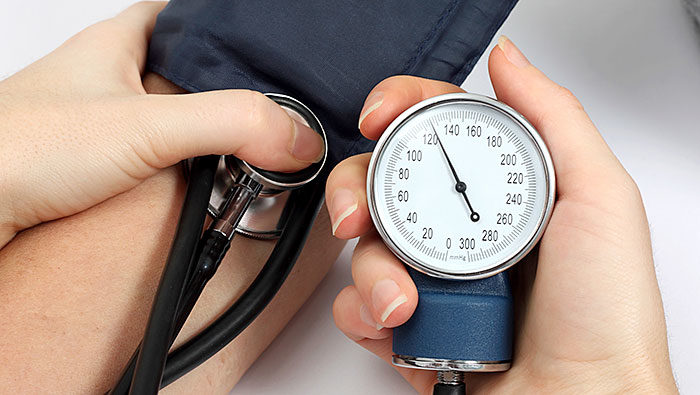 Hypertension is the medical term for high blood pressure. The pressure in a person's arteries (blood vessels) is determined by the pumping action of the heart and the resistance (degree of stiffness) in the arteries. When the heart contracts and pushes the blood through the arteries, the pressure rises and reaches a peak, called the systolic pressure. During the relaxation of the heart muscle, the pressure falls and reaches a low level, called the diastolic pressure. Blood pressure is always recorded as the systolic reading over the diastolic reading. Normal blood pressure is usually below 130/80 mmHg. With the development of atherosclerosis and with age, arteries lose elasticity ("hardening of the arteries"). This makes it more difficult for the heart to deliver blood through the blood vessels and the pressure rises. The higher pressure, in turn, can cause further hardening of the arteries. This situation leads to hypertension. Hypertension is a sign of vascular disease (arteries that have lost their natural elasticity), as well as a cause of further vascular disease. Individuals with elevated blood pressure have a greater risk of suffering from the consequences of vascular damage, such as heart failure, heart attack, stroke and kidney failure. Lowering the blood pressure with diet, exercise, weight loss and smoking cessation is beneficial. In many cases of hypertension, such life style changes are not enough to lower blood pressure enough, and medications are needed. High blood pressure medicines are usually easy to take and well tolerated. This is even more important for individuals with other cardiovascular risk factors, such as diabetes, high cholesterol, family history of stroke or heart disease and cigarette smoking. Problems in the treatment of hypertension include the fact that many people are unaware of their elevated blood pressure. Every adult should know his or her blood pressure, and should seek medical advice if it is elevated. Christiaan Janssens CRO Akwa Wellness 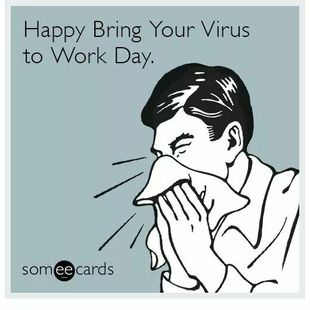 You're familiar with the scenario: A colleague in the next cubicle is hacking and sneezing, and you are afraid to breathe for fear of being infected with a nasty bug. Although working sick may have been deemed a no-no in the past, it's a reality, and people often don't have a choice. If You Have to Work If you have to work sick, the best thing you can do to avoid spreading germs is to regulary wash your hands. Germs are everywhere. We live in a germy world, and there is no way to ever get rid of all of them, but the most important prevention tactic is washing your hands or, even better, using an alcohol-based cleanser regularly. In addition, sick employees should consider rescheduling meetings, avoid close contact with other individuals or even work from home, if permitted. Everyone feels that their work is important, but you still have to pay attention to your own health and the health of others around you. People are most infectious around 24 hours before symptoms of the cold or flu even begin. Washing your hands regularly will prevent those germs from being spread. Even though you may feel the effects of the illness three to five days later, you are less likely to be infectious. You may feel crummy, but it is less likely you will spread the infection. However, a day or two at home in bed is the best option. If you are ill and feel so bad that you can't concentrate and do your job to the best of your ability, then you should stay home. Just be reasonable, and if you are lucky enough to have sick days, definitely take advantage of them so that you can get back on your feet in the fastest manner possible. Christiaan Janssens CRO Akwa Wellness 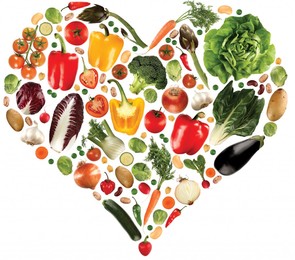 Although nothing will ever be able to give you a 100-percent, money-back guarantee that you'll never develop cancer, there are things you can do to reduce your risk. According to the American Institute for Cancer Research (AICR), focus on four areas to reduce your risk of cancer. The first is, simply put: don't use tobacco in any form. According to the National Cancer Institute, tobacco use is the single-most preventable cause of death. Cigarette smoking alone causes 30 percent of all cancer deaths every year. Other forms of tobacco also significantly increase cancer risk. The AICR says that most people have gotten that message: 98 percent of respondents to a recent survey were aware of cancer-related risks from tobacco. But fewer than half were aware of other ways to reduce risk: - Crowd your plate with fruits, vegetables, whole grains, beans, soy and other plant-based foods. Scientists are still discovering the exact links between these foods and reduced cancer rates, but it appears that the vitamins, minerals and phytochemicals they provide help the body prevent or slow the cancer process. The National Cancer Institute recommends up to 10 servings of plant-based foods each day. - Maintain a healthy weight. It appears that fat cells actually release hormones and other growth factors into the bloodstream, prompting an acceleration of cell division. More fat cells mean more opportunity for cell division, and that alone could increase the risk of cancer. - Get regular exercise. This works two ways: First, it can help you maintain your weight, curbing that risk factor. But research also indicates that physical activity also seems to regulate the hormones and insulin-like growth factors released from the fat cells you do have. According to the AICR, a diet based primarily on plant foods can reduce your risk of cancer by 20 percent. Combine that with physical activity and weight management, and you can reduce your risk by 30 percent. Christiaan Janssens CRO Akwa Wellness Websites: American Institute for Cancer Research National Cancer Institute  High fat diets…low fat diets…which is healthier? Research has shown that the type of fat in the diet, rather than the quantity, may be important in the prevention of chronic disease. Population studies and some controlled research studies indicate that the Mediterranean diet may be beneficial in improving health in many ways, such as improving lipid levels, reducing inflammation, and improving glycemic control. The diet is high in nutrients, fiber, and phytochemicals which contribute to overall health. Also, the diet is high in monounsaturated fat, a specific type of fat that may lower blood cholesterol. More research is needed to determine the long-term effects of Mediterranean-type diets and the mechanisms responsible for those effects. What is a Mediterranean diet? A Mediterranean diet is based on the food habits of those countries bordering the Mediterranean Sea, such as Greece, Southern Italy, Spain, Southern France, Tunisia, Morocco, and Lebanon. People in this region eat an abundance of fruits, vegetables, nuts, legumes, and whole grains and moderate amounts of fish, poultry, dairy products, and red wine. They eat very small amounts of red meat and refined grains. The Mediterranean diet is moderately high in fat (about 35-40% of its calories from fat) with the main type of fat being monounsaturated fat from olive oil and nuts. The diet has been known for being very flavorful and satisfying! How do I change to a Mediterranean-type diet? You can convert your diet to a Mediterranean-type diet by making the following changes: - Increase the amount and variety of fruits, vegetables, and whole grains. - Include good sources of monounsaturated fat such as olive, canola, or peanut oil, nuts, peanut butter, seeds, avocado, and olives. - Choose poultry or fish instead of red meats. Eat lean cuts of red meat no more than a few times a month; avoid processed meats such as bacon, sausage, and luncheon meats. - Choose low-fat and fat-free varieties of dairy products. - Avoid refined white flour products, white rice, and sugar. - Avoid butter, lard, mayonnaise, and creamy salad dressings. Start with small changes to your diet, such as adding olive oil to cooked vegetables; adding avocado or nuts to salad; dipping whole wheat bread in olive oil; eating nuts and seeds as a quick snack; and using peanut butter as a fruit dip. Since the Mediterranean-type diet includes foods that are high in fat and calories, remember to watch your portion sizes! And don’t forget to include physical activity in your daily routine. Christiaan Janssens CRO Akwa Wellness Websites, sources and references: Mediterranean Diet 101: A Meal Plan and Beginner's Guide Mediterranean diet: A heart-healthy eating plan Primary Prevention of Cardiovascular Disease with a Mediterranean Diet Singh RB, Rastogi SS, Verma R, Laxmi B, Singh R, Ghosh S, Niaz MA. Randomised controlled trial of cardioprotective diet in patients with recent acute myocardial infarction: results of one year follow-up. BMJ. 1992; 304: 1015–1019. De Lorgeril M, Renaud S, Mamelle N, Salen P, Martin JL, Monjaud I, Guidollet J, Touboul P, Delaye J. Mediterranean alpha-linolenic acid-rich 784 Mediterranean Diet and Coronary Heart Disease. Lancet. 1994; 343: 1454–1459. Willett WC, Sacks F, Trichopoulou A, et al. Mediterranean diet pyramid: a cultural model for healthy eating. Am J Clin Nutr 1995;61:Suppl:1402S-1406S. Sofi F, Abbate R, Gensini GF, Casini A. Accruing evidence on benefits of adherence to the Mediterranean diet on health: an updated systematic review and meta-analysis. Am J Clin Nutr 2010; 92: 1189-1196. |
AuthorDrs. Christiaan Janssens Archive
Augustus 2019
Categories |
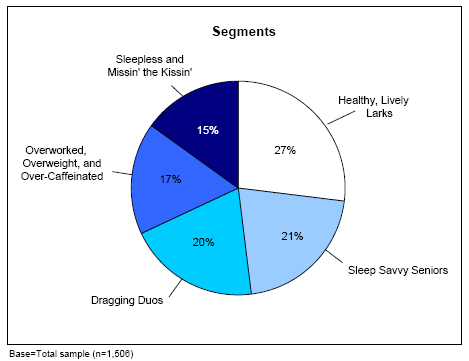
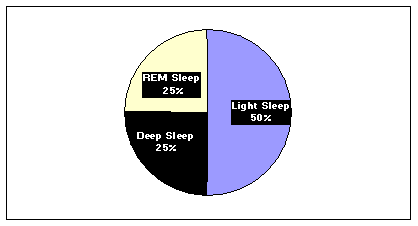


 RSS-feed
RSS-feed
